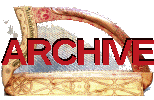
|
This page gathers documentation for the use of Gaelic harps in ecclesiastical contexts.
Medieval
In the early medieval periods, clerics and monks played stringed instruments, and they taught string playing as part of the education offered to their students. An example is Tuotilo (c.850 - c.915), an Irish monk at the monastery of St Gall:
|
“ Tuotilo... in omnium genere fidium et fistularum prae omnibus. Nam et filio nobilium in loco ab abbate destinato fidibus adocuit. „ |
|
| 1 | |
Gerald of Wales described the harp of St Kevin preserved as a relic at Glendalough in the 12th century:
|
“ ...accidit ut episcopi et abbates, et sancti in Hibernia viri, citharas circumferre, et in sis modulando pie delectari consueverint. Quapropter et sancti Keivini cithara et indigenis in reverentia non modica, et pro reliquiis virtuosis et magnis, usque in hodiernum habetur. „ |
...the bishops and abbots, and holy men in Ireland, were accustomed to carry harps around with them, and to be piously entertained with their music. On which account, both the harp of St. Kevin, and his other important and powerful remains, are held in no small reverence by the people of Ireland to this day. |
| Giraldus Cambrensis, Topographia Hibernica, c.11882 | |
The Queen Mary harp includes crosses on the sundbox and in the vine scroll on the pillar; not evidence that it was used liturgically, but this does show a religious context for its construction and use.
16th century
The Archduke Ferdinand made an unplanned stop in Kinsale in the summer of 1518, and while he was there a harper performed for him:
|
“ ...aveucq un harpe que son serviteur luy portoit. De laquelle ce sauvaige en jouoit fort bien gorgiasement et se chantoit quant et quant. Je demanday à ce trucheman, quelle chose cestuy chantoit. Il me dict que c’estoit une bien dévote et piteuse chausson, sur le mistère de la passion de nostre Saulveur Jésu-Crist. „ |
...with a harp his servant carried for him. On which the savage played extremely gorgeously and sang on and on. I asked the intermediary what he was singing. He said it was a very devout and piteous song, on the mystery of the passion of our saviour Jesus Christ. |
| Laurent Vital, Premier Voyage de Charles-Quint en Espagne, de 1517 à 1518, CELT edition & translation, 2012 | |
The Ballinderry harp metalwork includes IHS in a prominent position; not evidence that it was used liturgically, but this does show a religious context for its construction and use.
An inventory of Lindores Abbey in Fife in 1530 includes “Ane clairchew”3
17th century
18th century
Certain tunes may have bourne symbolism amongst the old Catholics. Two attributed to Rory Dall have possible connections. Da mihi manum is described as “an Arcanum” by Lawrence Whyte in the 1730s4, while the Gaelic title of the tune printed by Dow, Suipair thighear Leoid - Lude’s supper by Rorie Dall5 could be translated as “Mass at Lude”.
Arthur O’Neill tells a humourous story which incidentally shows how Thady Elliott (1725 - ?) played regularly for mass in the chapel at Navan in the 1750s:
|
“
On a Christmas Day Thady was to play at the Roman Catholic Chapel of Navan, and a humorous fellow in Navan took Thady to a public house and promised to give him a gallon of whiskey if he rattled up ‘Planxty Connor’ at the time of the Elevation, which Thady promised to do. Accordingly when Mass commenced on Christmas morning Thady as usual played some sacred airs until the Elevation, and for the sake of the whiskey and [to] be as good as his word he lilted up ‘Planxty Connor’. The priest, who was a good judge of music, knew the tune but at that solemn stage of the ceremony he could not speak to Thady. But to show his disapprobation he stamped violently on the altar - so much so that the people exclaimed in Irish, ‘Dar Dhia, tá an sagart a’ damhsa!’, that is, ‘By God, the priest is dancing!’ However, after playing ‘Planxty [Connor]’ for some short time he resumed his usual tunes. But when Mass was over Thady was severely reproved and dismissed. Harry Fitzsimons happened to be at a gentleman's house in that quarter and came that day to Navan to hear Mass, where I met him. On Elliott's disgrace I was applied to by the priest to succeed him in the chapel - which I declined, not wishing to supersede Thady, he being always very civil to me. But I recommended Fitzsimons, who readily accepted the offer; and he borrowed my harp and played during the remainder of the Masses „ | |
19th century
In 1812 James McMolaghan (c. 1798 - ), a student at the Belfast Harp Society in 18117, was on tour with another student of the Society. They stopped at the house of a Protestant activist. James was converted from his Catholicism, after which he is reported to have said:
|
“
I must go to America, or to England. I cannot stay in this kingdom. The Catholic gentry are the principal patrons of the Irish harp; to them I have been taught to look for support, and I have experienced their bounty: but my present views cut off all my expectations from that quarter. Each of them has his chaplain; some from devotion, but most because it is respectable to keep one. In those families, each morning is ushered in by the celebration of mass, and the assistance of the harp is esteemed the revival of a part of the splendor and solemnity of their religion; but I dare not now do it; I could no longer countenance such an abomination. „ | |
Simon Chadwick